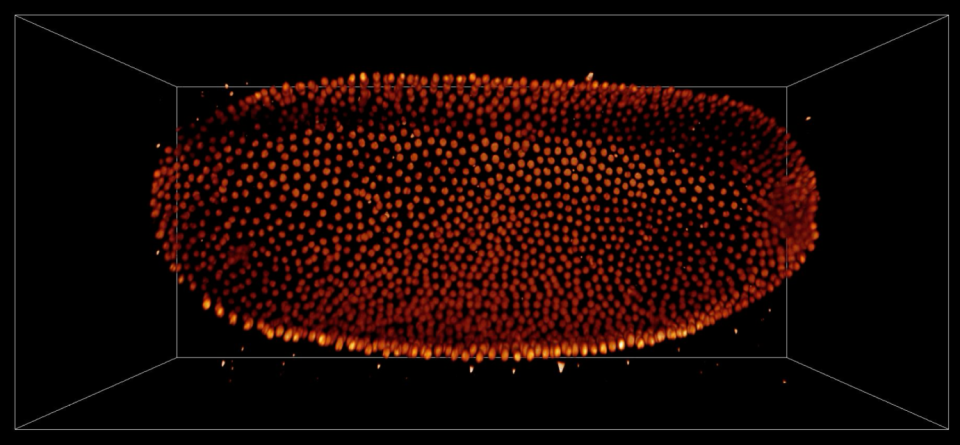Beecroft Building
David Brückner (IST Austria)
Abstract
Embryonic development is a spectacular display of self-organization of multi-cellular systems, combining transformations of tissue mechanics and patterns of gene expression. These processes are driven by the ability of cells to communicate through mechanical and chemical signaling, allowing coordinate both collective migration and patterning of cellular states. To ensure proper biological function, such patterns must be established reproducibly, by controlling and even harnessing intrinsic and extrinsic fluctuations. While the relevant molecular processes are increasingly well understood, we lack principled frameworks to understand how tissues obtain information to generate reproducible patterns. I will present an information-theoretic framework to mathematically define and interpret the reproducibility and robustness of fate patterns. Our framework provides a normative approach for optimization of cell signaling and mechanics, which we showcase using a variety of mechanistic models ranging from reaction-diffusion systems to delta-notch signaling. Furthermore, our approach allows us to estimate the reproducibility of experimental gene expression profiles of stem cell gastruloids, a self-organizing in vitro model of mammalian development. We demonstrate that these estimators assess the total amount of information contained in these expression profiles. This information is, in principle, accessible to the cells by local or non-local readouts, and provides a generalization of the concept of positional information, which is strictly local. Our work opens up an avenue towards unifying the zoo of chemical and mechanical signaling processes encountered across different developmental systems by using a common information-theoretic language.

